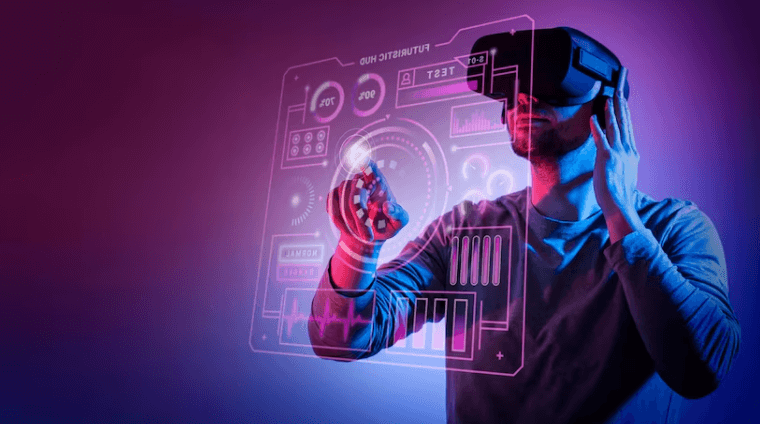In the realm of technological innovation, few advancements have generated as much excitement and potential as augmented reality (AR).
As a groundbreaking technology that superimposes digital elements onto our physical world, AR has already begun to reshape various industries and is poised to revolutionize the way we interact with technology.
From entertainment and education to healthcare and manufacturing, the future of augmented reality is full of promises that could change the very fabric of our daily lives.
A Glimpse into the Present
Before diving into the future, let’s take a quick look at the present state of augmented reality. AR technology has already made a significant impact through mobile applications like Snapchat and Pokémon GO.
These early examples have demonstrated how AR can enhance our interactions with the world around us, whether it’s adding whimsical filters to our selfies or placing virtual creatures in real-world environments.
However, the true potential of AR lies beyond entertainment. Industries such as healthcare have been leveraging AR to revolutionize medical training and surgery. Surgeons can now overlay digital images onto a patient’s body during procedures, enhancing precision and reducing the risk of errors.
Similarly, AR has proven invaluable in architecture and design, allowing professionals to visualize and modify structures before they’re built.
Education and Training
Looking ahead, one of the most promising applications of AR is in the realm of education and training. Traditional methods of learning are being augmented with immersive experiences that bring learning materials to life.
Imagine students being able to dissect a virtual frog or explore ancient ruins right from their classrooms. AR can bridge the gap between theoretical concepts and real-world applications, making learning more engaging and effective.
Furthermore, AR could revolutionize vocational training. From automobile repair to complex machinery operation, AR overlays can provide step-by-step instructions and real-time feedback, helping trainees acquire skills faster and with greater accuracy.
Retail and E-Commerce
The retail industry is also poised for a significant transformation through augmented reality. Online shopping, while convenient, lacks the tactile experience of physical stores. AR has the potential to bridge this gap by allowing customers to virtually try on clothing, visualize furniture in their living spaces, or even see how a new car would look in their driveway. This not only enhances the shopping experience but also reduces the rate of returns, benefiting both customers and businesses.
Healthcare and Telemedicine
AR’s potential in healthcare is vast. Telemedicine, which has seen a surge in adoption, could be enhanced by AR. Doctors could remotely diagnose and treat patients more effectively by visualizing medical data and instructions directly in the patient’s environment. This is particularly valuable for emergency situations where quick and accurate information is crucial.
Additionally, AR could aid in physical therapy by providing patients with interactive exercises and real-time feedback. Patients would be more motivated to perform their exercises correctly, leading to faster recovery times.
Entertainment and Gaming
While AR has already made its mark in entertainment and gaming, the future promises even more immersive experiences. Imagine treasure hunts in your neighborhood, where virtual clues are scattered throughout the environment, waiting to be discovered through AR apps.
Similarly, storytelling could take on a new dimension as characters and scenes are brought to life in the real world.
Challenges and Considerations
Of course, as with any emerging technology, there are challenges to address. Privacy concerns related to the collection and use of personal data in AR applications must be carefully managed.
Additionally, there’s a need for more robust hardware to fully unlock AR’s potential. Smaller and more powerful devices will be required for seamless and realistic AR experiences.
In Conclusion
Augmented reality is not just a fleeting trend; it’s a transformative technology with the power to reshape the way we interact with the world and the digital realm. From education and healthcare to retail and entertainment, AR’s potential applications are vast and varied.
As technology continues to evolve and improve, we can expect to see more innovative use cases that enhance our daily lives and push the boundaries of what’s possible. The future of augmented reality is here, and it’s excitingly limitless.
Author’s Section:
Suzzain is a passionate and insightful blogger, known for her captivating writing style and keen eye for detail. With a knack for storytelling, Suzzain takes readers on immersive journeys through her blog. She is Associated with, The New Technologyera, Next Future of AI, The Technews Media, The World Of Ev

